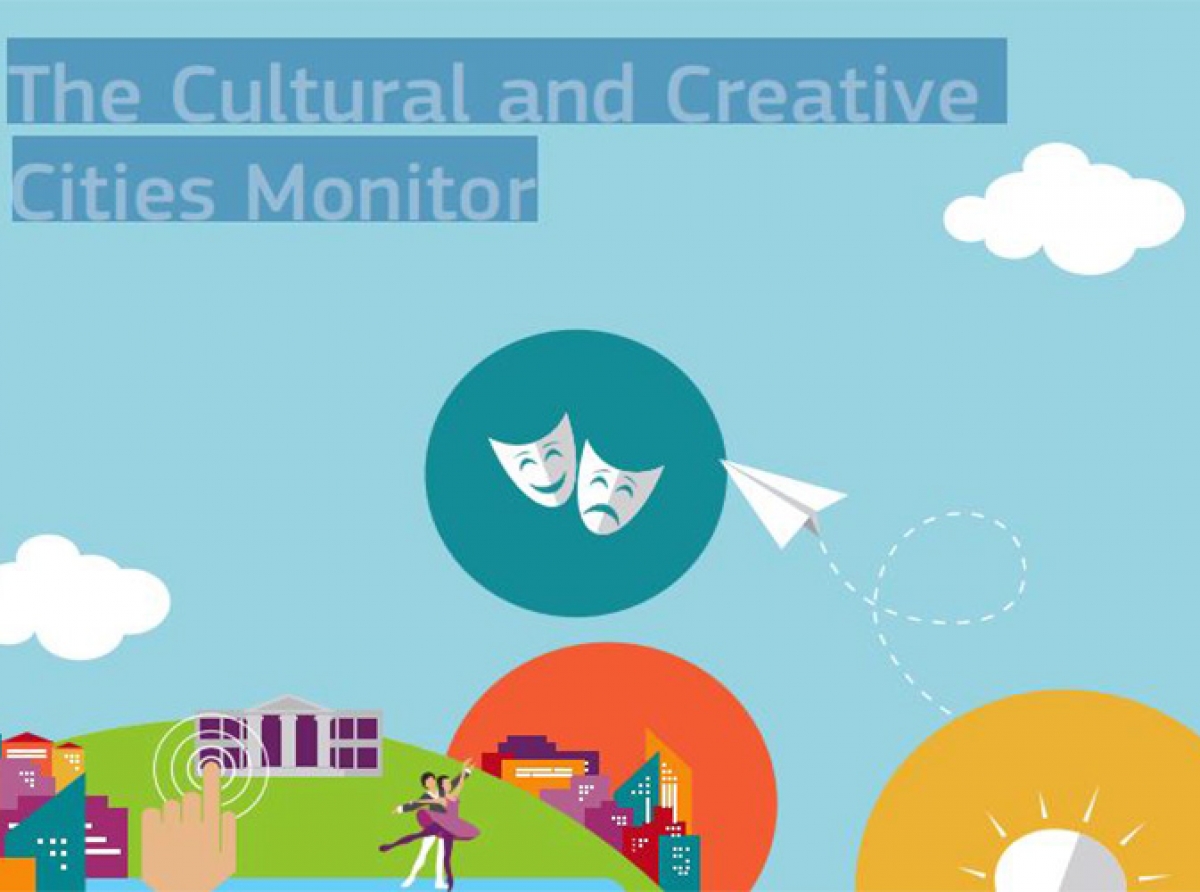Ippokratous 2, 10679 Athens, Greece
+30 210 3610265 +30 210 3622205
+30 210 3610276

European cities with a high share of cultural and creative jobs are particularly exposed to the economic impacts of the coronavirus crisis, according to a new JRC report.
The report identifies the cities most at risk and highlights inspirational practices and policies that have emerged during the crisis to support creative and cultural sectors.
Travel restrictions and social distancing measures have had an unprecedented impact on these sectors. The coronavirus pandemic has almost entirely disrupted the basic source of revenue that cultural operations need to meet their operating costs: paying visitors.
By rethinking cultural venues and events, cities across the EU are staying culturally vibrant, and showing their ability to ‘bounce forward’ from this crisis.
During the confinement period, cultural activities were cancelled and cultural venues closed to the public in many EU countries. They are now subject to strict social distancing rules.
Therefore, cultural workers not only have lost many job opportunities, but may also fall through the cracks of existing social protection systems more than other types of workers. Around a third are self-employed across the EU.
The percentage is even higher among artists and writers (44%). Non-standard workers such as the self-employed are at higher risk of losing their income and are more likely to have no alternative sources of income or medical insurance.
Self-employed persons in cultural employment and in total employment, EU-27, in %.
In addition to the EU, most national and local governments have promptly reacted to support cultural institutions and companies and preserve cultural jobs.
While cities of all sizes have proposed policy responses, it is mostly capital cities that have adopted large-scale support plans. This could lead to higher inequalities between cultural powerhouses and smaller arts cities, which future national and European policies should seek to address.
The overall economic impact of coronavirus is likely to be higher for those cities with higher shares of cultural jobs. Most cultural jobs are incompatible with teleworking and there is a strong interdependence with other sectors, from transport and tourism to food.
Most exposed cities includes medium and large Italian cities like Florence, Venice and Bologna; and Weimar and Mainz in Germany, where cultural jobs account for around 9 to 12% of all jobs.
The share of cultural jobs tends to be smaller in major and capital cities, having larger and more diversified job markets. In Paris (France), Copenhagen (Denmark), Stockholm (Sweden), Stuttgart (Germany), Frankfurt (Germany), Helsinki (Finland), Tallinn (Estonia) and Vilnius (Lithuania), cultural jobs represent between 5 and 8% of total jobs.
There are some exceptions. The share of cultural jobs is relatively high (9%) in a city like Milan (Italy), where culture is a main driver of the local economy.
Local cultural institutions all over Europe are already developing health and safety-compliant event formats, testing new business models to ensure a fair remuneration for artists, or adapting their mission to meet local communities’ needs.
Other cultural initiatives were initiated to support socially disadvantaged groups:
Cities are also encouraging people to visit from closer to home.
Vilnius has initiated a tourism campaign that aims to encourage Lithuanian residents to choose Vilnius as a travel destination.
Milan is working on an agreement protocol with the cities of Genoa and Turin (Italy) to promote proximity tourism among these cities.
Prague (Czechia) is providing hotels with vouchers that can be used to access museums, art galleries and other venues.
Groningen (Netherlands) has launched a pitch for new ideas to re-think culture and tourism in post-COVID-19 times.
The JRC’s Cultural and Creative Cities Monitor estimates that, in Europe alone, at least 190 cities in 30 different countries have committed to raise more inclusive and sustainable societies through investing in culture.
As part of the European Commission’s efforts to monitor the effects of COVID-19, the European Commission has asked beneficiaries of the Creative Europe Programme to showcase their activities under the common hashtag #CreativeEuropeAtHome, and launched the EUCultureFromHome social media campaign to collect cultural initiatives accessible online in the open source web app Cultural gems.
With many people staying closer to home for holidays this year, the Commission launched the social media campaign ‘Europe’s culture – close to you’, to help Europeans discover the beauty and richness of places close to their homes. The campaign is backed up by digital resources that will make European holidaymakers’ lives easier, including the new Re-open EU web platform with an interactive map developed by the Joint Research Centre.
The third edition of the JRC’s Cultural and Creative Cities Monitor is currently being reshaped to reflect the impacts anticipated in this report, with more in depth analysis. In the coming months the Cultural and Creative Cities Monitor’s online tool will launch a new policy mapping tool with the results of a city survey launched last April. The survey gathered inputs on initial impacts, experimental initiatives and policy support measures from over 60 cities in 23 European countries.
The full third edition of the Monitor, including a new policy report and updated online tool, is planned to be released in the first quarter of 2022.
Source: European Commission

The European Organisation for Strategic Planning operates within the framework of the new reality, which demands collective study and treatment of modern issues, as much on a European as on an International level.
Ippokratous 2, 10679 Athens, Greece
+30 210 3610265 +30 210 3622205
+30 210 3610276